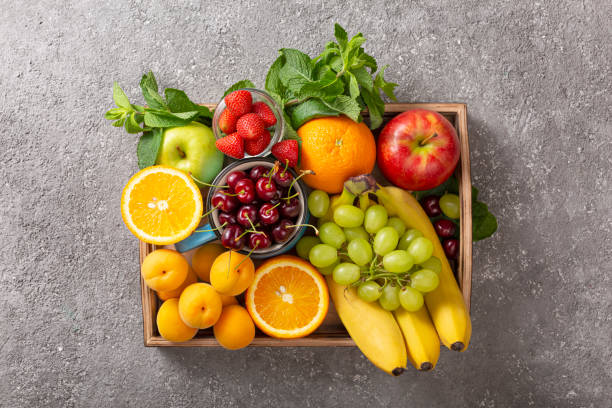
Is Fruit Really Bad for Your Blood Sugar? What You Need to Know
Share
When it comes to managing blood sugar levels, there’s a lot of misinformation out there about whether fruit should be part of a healthy diet. Many people are concerned that fruit, because it contains sugar, might be a trigger for blood sugar spikes, particularly for those managing conditions like diabetes or insulin resistance. However, the relationship between fruit and blood sugar is more nuanced than you might think. Let’s take a closer look at why fruit doesn’t need to be feared and how you can include it in a balanced, blood sugar-friendly diet.
First, it’s important to understand that not all sugars are created equal. The sugars found in fruit, like fructose, are natural and come with essential nutrients such as vitamins, minerals, and antioxidants. Unlike added sugars found in processed foods and sugary drinks, the sugar in fruit is packaged with fiber. Fiber slows the absorption of sugar into the bloodstream, which helps prevent rapid spikes in blood sugar levels. This means that, for most people, eating fruit doesn’t cause the same blood sugar issues as eating foods laden with added sugars.
Another crucial factor to consider is the glycemic index (GI) of different fruits. The glycemic index is a scale that ranks foods based on how quickly they raise blood sugar levels after consumption. Fruits with a low glycemic index, like berries, apples, and pears, have a slower, more gradual effect on blood sugar levels, making them great options for people looking to maintain stable blood sugar. On the other hand, some tropical fruits like pineapple, watermelon, and bananas have a higher glycemic index and can cause a quicker rise in blood sugar. However, this doesn’t mean these fruits are off-limits. It just means that portion control and mindful pairing with other foods (like proteins and healthy fats) can help minimize any potential blood sugar spikes.
Fiber also plays a key role in managing blood sugar. Fruits that are high in fiber, such as apples, pears, and avocados, can help regulate blood sugar levels. Fiber helps slow the digestion of sugars, which leads to a more gradual increase in blood glucose. Additionally, high-fiber fruits are beneficial for overall insulin sensitivity, meaning your body becomes better at responding to the insulin it produces. This is important for people managing conditions like type 2 diabetes, as it can improve blood sugar control over time.
Portion control is another important aspect when it comes to fruit and blood sugar. While fruit can be a healthy part of your diet, overeating any food — fruit included — can still lead to an excess of sugar and potentially affect blood sugar levels. It’s especially important to be mindful of portion sizes when consuming higher-sugar fruits like grapes, mangoes, or cherries. The key is balance: a small portion of fruit as part of a meal can be a healthy and enjoyable way to get important nutrients without overloading your system with sugar.
One other thing to keep in mind is the difference between whole fruits and fruit juices. Whole fruits are always the better choice when it comes to blood sugar management. Fruit juices, even 100% juice, are typically low in fiber and can lead to quick spikes in blood sugar. When you consume whole fruit, the fiber slows down the sugar absorption, helping to keep blood sugar levels stable.
The bottom line is that fruit doesn’t need to be feared if you’re watching your blood sugar. In fact, it’s a valuable part of a healthy, well-rounded diet. By choosing fruits with a low glycemic index, paying attention to portion sizes, and balancing your fruit intake with other healthy foods, you can enjoy the natural sweetness and nutritional benefits of fruit without worrying about causing blood sugar spikes. With the right approach, fruit can absolutely be part of a blood sugar-friendly diet.
Get more knowledge about eating healthy, please refer to Diabetes-Friendly Meal Plans.
